Related Research Articles

Roy Owen Haynes is an American jazz drummer. He is among the most recorded drummers in jazz. In a career lasting over 80 years, he has played swing, bebop, jazz fusion, avant-garde jazz and is considered a pioneer of jazz drumming. "Snap Crackle" was a nickname given to him in the 1950s.
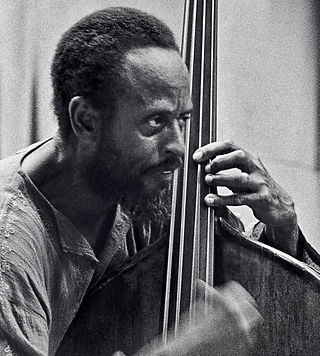
Percy Heath was an American jazz bassist, brother of saxophonist Jimmy Heath and drummer Albert Heath, with whom he formed the Heath Brothers in 1975. Heath played with the Modern Jazz Quartet throughout their long history and also worked with Miles Davis, Dizzy Gillespie, Charlie Parker, Wes Montgomery, Thelonious Monk and Lee Konitz.

Sonny Stitt was an American jazz saxophonist of the bebop/hard bop idiom. Known for his warm tone, he was one of the best-documented saxophonists of his generation, recording more than 100 albums. He was nicknamed the "Lone Wolf" by jazz critic Dan Morgenstern because of his tendency to rarely work with the same musicians for long despite his relentless touring and devotion to jazz. Stitt was sometimes viewed as a Charlie Parker mimic, especially earlier in his career, but gradually came to develop his own sound and style, particularly when performing on tenor saxophone and even occasionally baritone saxophone.
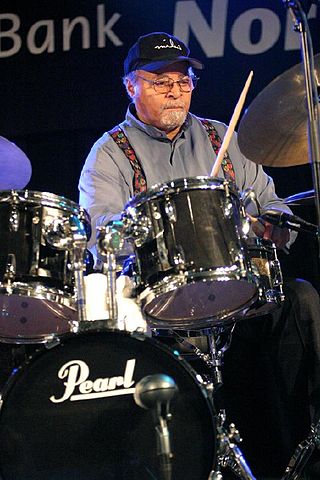
Wilbur James "Jimmy" Cobb was an American jazz drummer. He was part of Miles Davis's First Great Sextet. At the time of his death, he had been the band's last surviving member for nearly thirty years. He was awarded an NEA Jazz Masters Fellowship in 2009.
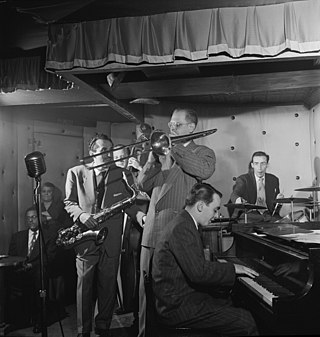
Dillon "Curley" Russell was an American jazz musician, who played bass on many bebop recordings.
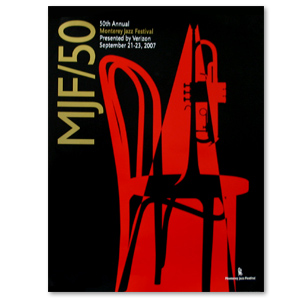
The Monterey Jazz Festival is an annual music festival that takes place in Monterey, California, United States. It debuted on October 3, 1958, championed by Dave Brubeck and co-founded by jazz and popular music critic Ralph J. Gleason and jazz disc jockey Jimmy Lyons.
"I'll Remember April" is a popular song and jazz standard with music written in 1941 by Gene de Paul, and lyrics by Patricia Johnston and Don Raye. It made its debut in the 1942 Abbott and Costello comedy Ride 'Em Cowboy, being sung by Dick Foran. The lyric uses the seasons of the year metaphorically to illustrate the growth and death of a romance. The lyric also uses the ideas of the hours in a day and the flames of a fire to illustrate a relationship growing stronger and subsequently losing strength. Another interpretation is the use of spring to express the loves that were had in youth and remember them when the autumn of life arrives with affection and nostalgia, smiling: "I'll remember April and I smile". The song has been described as one which makes use of nostalgia.

Irving Sidney "Duke" Jordan was an American jazz pianist.

George Duvivier was an American jazz double-bassist.
James Elbert Raney was an American jazz guitarist, born in Louisville, Kentucky, United States, known for his work from 1951 to 1952 and then from 1953 to 1954 with the Red Norvo trio and, during the same time period, with Stan Getz. In 1954 and 1955, he won the DownBeat Critics' Poll for guitar. Raney worked in a variety of jazz mediums, including cool jazz, bebop, post bop, hard bop, and mainstream jazz.

Samuel Jones was an American jazz double bassist, cellist, and composer.
Ronnie Stephenson was an English jazz drummer. He was one of the most in-demand drummers on the British jazz scene in the 1960s.
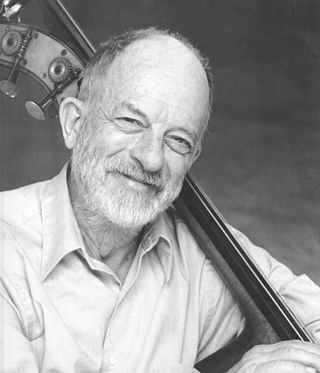
William Orval Crow is an American jazz bassist. Among other work, Crow was the long-term bassist in saxophonist Gerry Mulligan's bands in the 1950s and 1960s.
"Scrapple from the Apple" is a bebop composition by Charlie Parker written in 1947, commonly recognized today as a jazz standard, written in F major. The song borrows its chord progression from "Honeysuckle Rose", a common practice for Parker, as he based many of his successful tunes over already well-known chord changes.
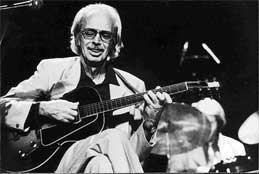
James Pasco Gourley, Jr. was an American jazz guitarist who spent most of his life in Paris.

Charles Thomas Potter was an American jazz double bass player, best known for having been a member of Charlie Parker's "classic quintet", with Miles Davis, between 1947 and 1950.
Gene Ramey was an American jazz double bassist.
Jodie Christian was an American jazz pianist, noted for bebop and free jazz.
The recordings of American jazz saxophonist Stan Getz from 1944 to 1991.
This article contains the discography of the American jazz trumpeter and singer Chet Baker. His most productive period was arguably for Pacific Records during the 1950s, which included his first vocal recordings.
References
- ↑ Dawson, Michael (2018). Connectionist Representations of Tonal Music. AU Press. p. 233. ISBN 9781771992206.
- ↑ Jack Chamber: Milestones: The Music in Times of Miles Davis. Cambridge, Massachusetts: Da Capo Press, 1998 (unabr. paperback edn): Pt. 1, p. 184.
- ↑ Cole, Bill (1994). Miles Davis: The Early Years. pp. 209–210. ISBN 9780306805547.
- ↑ "Tune Up". Learnjazzstandards.com. Retrieved 7 June 2021.
- ↑ Hellmer, Jeffrey; Lawn, Richard (2005). Jazz Theory and Practice. Alfred Publishing Company. p. 99. ISBN 9781457410680.
- ↑ Levine, Mark (2011). The Jazz Piano Book. SHER Music. pp. 7–8. ISBN 9781457101441.